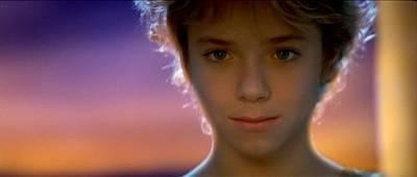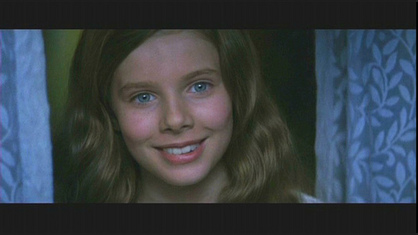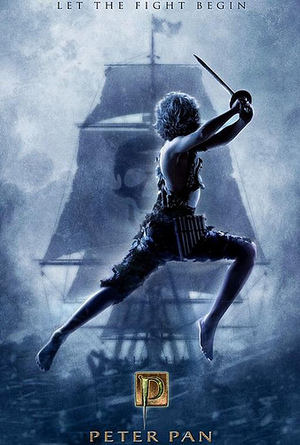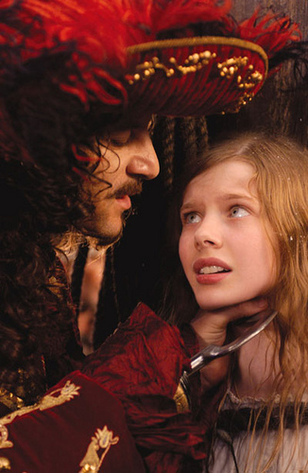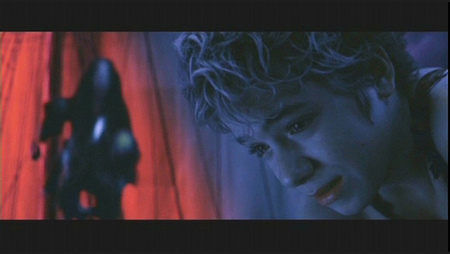Peter Pan - 2003 Film Verison
J.M.Barrie's Peter Pan, or the Boy Who Wouldn't Grow Up inspired many people around the world to re-create his timely classic. One recent appropriation made in 2003, P.J.Hogan's Peter Pan, is a film which represents the modernistic ideologies which the people of the Victorian era believed were improper and immoral. This film majorly portrays how our Western society has become less misogynistic and also portrays the importance of children's innocence as the gripping reality of predators, for example, have made parents today much more protective of their children's sanity than they were one hundred years ago. Other modernised western aspects have rubbed off on this film such as how the responder becomes more attached and sympathetic towards the antagonists compared to Victorian times where the bad-guy was socially and morally evil and in no way were proper people to sympathise with him! All in all, the magic of special effects and the powerful concept of societal change in ideologies make this modern Neverland come to life.
It took women over four thousand five hundred years to build up enough courage to fight for their suffrage and to become equals with men. Many misogynistic issues are still trying to be settled in today's society. Peter Pan is different to its original text because it wasn't written in a patriarchal society where men ruled and believed women to be mad and totally immoral when they protested against anything that challenged the reputation of the male sex. You see, women did not have brains therefore how could they possibly have the right to voice their own opinions? Instead, Peter Pan was written in a time where women have gained their equality with men, in western society that is. P.J.Hogan's film portrays this contrast between the original and his film by characterising the main protagonist as Wendy Darling. By giving Wendy the main heroine roles and not Peter Pan is unique for the plot of the story as Peter is involved in many of the events. However, it is not rare in modern-day society for a female to be awarded with the top role. Equality is a significant element to our everyday lives and be incorporating the characterisation of Wendy as the main protagonist over Peter Pan exemplifies this even further.
Parenthood has developed over the histories from discarding unhealthy and deformed babies in ancient Sparta; to making sure your children were fit and prepared for the responsibilities of maturing into adulthood in the Victorian era; then to what it is now, overly protective nurturing with no room for the child to grow. Many people in Western society believe that parenting these days is much healthier for their child then it was in the Twentieth Century. However, the truth is it has become progressively worse. This generalisation of all Western parents relates well to P.J.Hogan's film Peter Pan. Mr and Mrs Darling are the embodiment of the over protective parents because they metaphorically prevent the "Peter Pan Cycle" from continuing, unlike in the novel. By insisting "the window must always be open for them", Mrs Darling and Mr Darling go mad with their parenting as they are not willing to accept the "Peter Pan Cycle". Of course, in the novel the Darlings rush to the nursery in an attempt to try and keep the children there (just like in the film), however, by the end it is Peter who tries to bar the children out so "when Wendy comes she will think her mother has barred her out; and she will have to go back with me." By metaphorically 'keeping the nursery window open' and by acting obsessively when it comes to making sure their children are kept away from going to the Neverland again proves that the westernised style of parenting is overly protective about the "Peter Pan Cycle".
Another major contextual element which has rubbed off into the film is the modernised western appeal to sympathise and become emotionally attached to the antagonist character. In Peter Pan, P.J.Hogan has used the characterisation and casting of Captain Hook in conjunction with the style of Western cinematic techniques to encourage the responder to sympathise with the antagonist. Back in the Victorian era, the bad-guy was evil, immoral and sinful; therefore there is no reason to have pit on them. However, as times have changed, so have the film interests and techniques. P.J.Hogan characterises and casts Captain James Hook equally with Mr Darling to assist in representing the idea that the children assimilate their father into the antagonist of the story due to their hatred towards him for forcing Wendy to not endure the "Peter Pan Cycle" - to grow up too quickly. By using this technique, Hogan is able to engage the responder's interests in Captain Hook and Mr Darling as they slowly realise that they are the same character and actor. Also, by filming this appropriation with the concept of sympathising with the antagonist, Hogan is able to relate Captain Hook with the audience with his past negligence from his mother, thus his lack of love; "Oh evil day! He had found himself a - Wendy? And Hook is all alone". He then becomes jealous of Peter and Wendy's love for one another. This, therefore collaborated with the characterisation and casting of Mr Darling and Captain Hook, makes the responder pity these two characters (or the antagonists) for their similarities; lack of love.
It took women over four thousand five hundred years to build up enough courage to fight for their suffrage and to become equals with men. Many misogynistic issues are still trying to be settled in today's society. Peter Pan is different to its original text because it wasn't written in a patriarchal society where men ruled and believed women to be mad and totally immoral when they protested against anything that challenged the reputation of the male sex. You see, women did not have brains therefore how could they possibly have the right to voice their own opinions? Instead, Peter Pan was written in a time where women have gained their equality with men, in western society that is. P.J.Hogan's film portrays this contrast between the original and his film by characterising the main protagonist as Wendy Darling. By giving Wendy the main heroine roles and not Peter Pan is unique for the plot of the story as Peter is involved in many of the events. However, it is not rare in modern-day society for a female to be awarded with the top role. Equality is a significant element to our everyday lives and be incorporating the characterisation of Wendy as the main protagonist over Peter Pan exemplifies this even further.
Parenthood has developed over the histories from discarding unhealthy and deformed babies in ancient Sparta; to making sure your children were fit and prepared for the responsibilities of maturing into adulthood in the Victorian era; then to what it is now, overly protective nurturing with no room for the child to grow. Many people in Western society believe that parenting these days is much healthier for their child then it was in the Twentieth Century. However, the truth is it has become progressively worse. This generalisation of all Western parents relates well to P.J.Hogan's film Peter Pan. Mr and Mrs Darling are the embodiment of the over protective parents because they metaphorically prevent the "Peter Pan Cycle" from continuing, unlike in the novel. By insisting "the window must always be open for them", Mrs Darling and Mr Darling go mad with their parenting as they are not willing to accept the "Peter Pan Cycle". Of course, in the novel the Darlings rush to the nursery in an attempt to try and keep the children there (just like in the film), however, by the end it is Peter who tries to bar the children out so "when Wendy comes she will think her mother has barred her out; and she will have to go back with me." By metaphorically 'keeping the nursery window open' and by acting obsessively when it comes to making sure their children are kept away from going to the Neverland again proves that the westernised style of parenting is overly protective about the "Peter Pan Cycle".
Another major contextual element which has rubbed off into the film is the modernised western appeal to sympathise and become emotionally attached to the antagonist character. In Peter Pan, P.J.Hogan has used the characterisation and casting of Captain Hook in conjunction with the style of Western cinematic techniques to encourage the responder to sympathise with the antagonist. Back in the Victorian era, the bad-guy was evil, immoral and sinful; therefore there is no reason to have pit on them. However, as times have changed, so have the film interests and techniques. P.J.Hogan characterises and casts Captain James Hook equally with Mr Darling to assist in representing the idea that the children assimilate their father into the antagonist of the story due to their hatred towards him for forcing Wendy to not endure the "Peter Pan Cycle" - to grow up too quickly. By using this technique, Hogan is able to engage the responder's interests in Captain Hook and Mr Darling as they slowly realise that they are the same character and actor. Also, by filming this appropriation with the concept of sympathising with the antagonist, Hogan is able to relate Captain Hook with the audience with his past negligence from his mother, thus his lack of love; "Oh evil day! He had found himself a - Wendy? And Hook is all alone". He then becomes jealous of Peter and Wendy's love for one another. This, therefore collaborated with the characterisation and casting of Mr Darling and Captain Hook, makes the responder pity these two characters (or the antagonists) for their similarities; lack of love.
